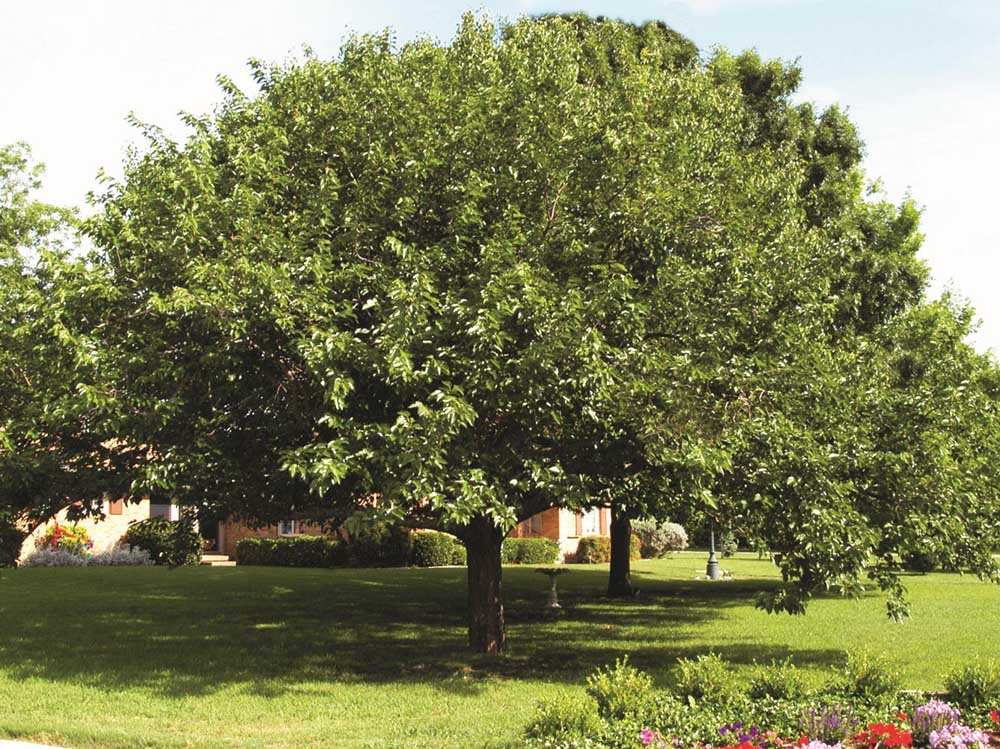Redbuds will grow happily among oaks
Published 1:30 am Thursday, April 4, 2019

- OLD FRUITLESS mulberry trees can stay put as long as they're healthy, after which they can be replaced with more desirable trees.
Dear Neil: We have a small redbud growing among oak trees on property near Kerrville. It is protected from deer, but it doesn’t appear to be growing very rapidly. Should I transplant it where it will get more sun? Is it too large to move?
A: It’s not too large to move, but it’s too late to move it for this year. It has already started to leaf out and is blooming at the time of your photo. Once a tree commits to that much growth it would set it back terribly (if not kill it) to try to dig it and transplant it. That must be done during the winter. Actually, redbuds do very well in shady locations, and they’re perfectly happy to grow mixed in with other trees. I have 20 or more that have come up among our pecan trees on our 11-acre native pecan forest, and unless they’re really in the way, I just leave them. That’s what I’d do with your tree. If you need a redbud somewhere else, buy and plant one now while nurseries have good supplies. Be prepared to water it by hand the first couple of growing seasons, probably every couple of days during the hot weather.
MULBERRY TREES
Dear Neil: I recently bought a house that was built in the 1960s. It had six large fruitless mulberry trees around it. Two were dead and I have already had them removed. Two others are intertwined with other trees. The final two are beautiful. I didn’t realize at the time that I bought the house that these trees aren’t very desirable. Should I have all six taken out so I can replace them with something better while I’m young, or can I enjoy them for a while longer?
A: If those trees have been there that long, they’re probably on their last roots. However, I’d not remove a healthy one until it shows signs of faltering. You might want to have a certified arborist look at the two trees to seek an opinion. Then you can gradually switch over to a much higher-quality tree such as an oak, pecan, cedar elm or Chinese pistachio.
UNSTABLE PRIVET
Dear Neil: I planted a variegated privet when we redid our landscape. I liked its crisp, white foliage. However, it now has significant portions of its branches that are basically green. What happens to cause that, and is there any way to get them back to white again?
A: That selection is very popular, but it’s not very stable. It almost always reverts freely, changing back to the much stronger-growing green form in random branches sprinkled all over the plant. They overtake and outgrow the variegated branches until the plant ends up being much larger and more aggressive — and solid green. Your only recourse, short of planting something else entirely, is to keep pruning shears handy and to trim out all of the green growth as it appears.
MALE OR FEMALE?
Dear Neil: Is it possible to tell if you’re buying a male or female yaupon holly if it doesn’t have berries at the nursery?
A: Great question! It’s remarkable that you remember that yaupons and some other hollies bear their male and female flowers on different plants. First, you buy from a veteran nursery professional who really knows the stock that is being offered. If it is a named variety with a nametag hanging on it, check to see if it’s a female (fruiting) selection. Most of the named varieties are. There are ample male yaupons in landscapes already to ensure good pollination so unless you live in a really remote setting, you don’t need to worry about including a male yaupon in your gardens.
Or, the really precise way to tell is to look at the flowers while the plant is in bloom. Use a hand lens. You can see pollen sacs if it’s a male plant and you can see the tiny bowling-pin-like female flower parts that will become the fruit on the female yaupons.
Have a question you’d like Neil to consider? Mail it to him in care of this newspaper or email him at mailbag@sperrygardens.com. Photos submitted with letters must not come from previously published material and may be used for publication. Neil regrets that he cannot reply to questions individually.







